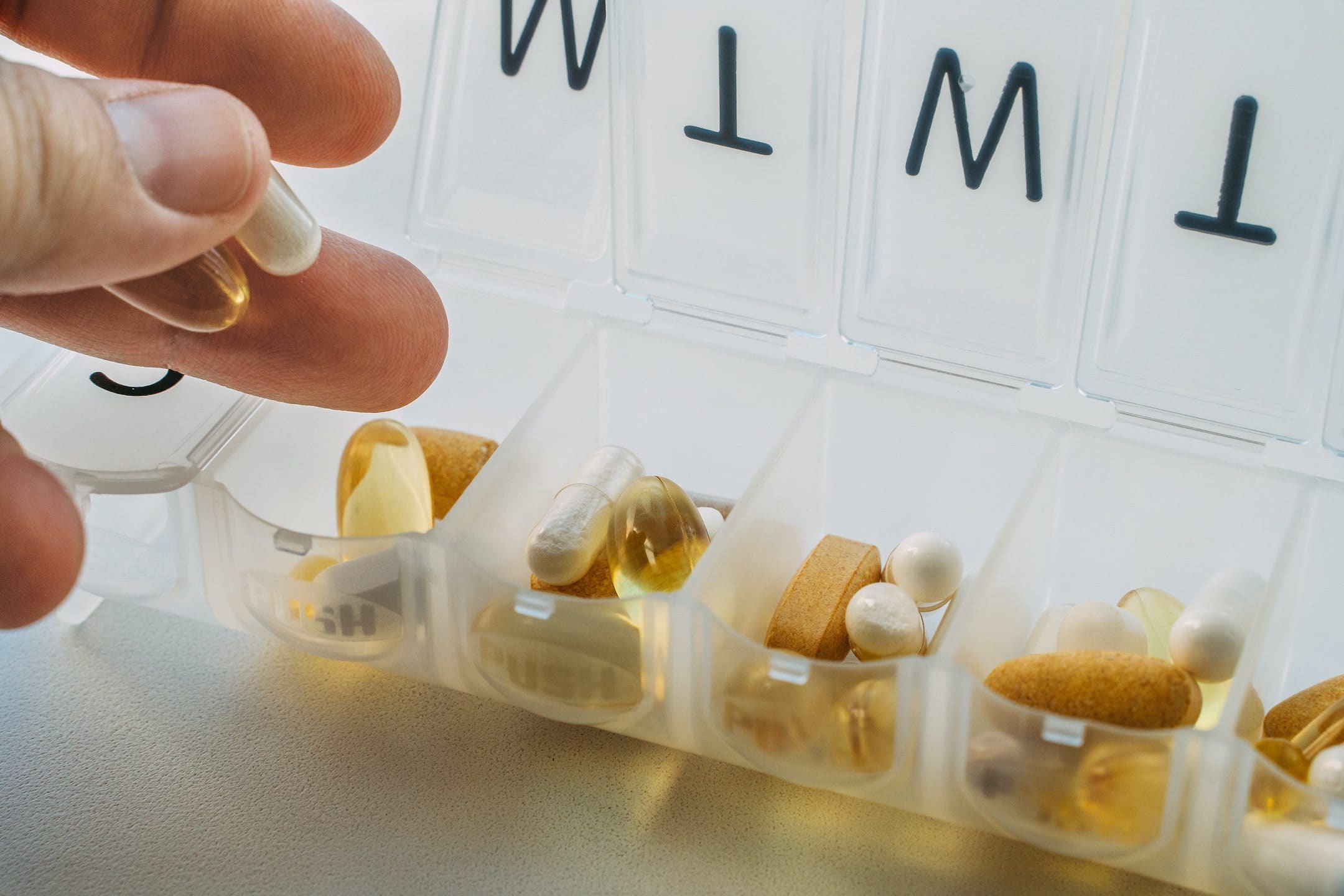Gender-affirming therapy can allow people to live their happiest, most fulfilled lives. But because gender affirmation care typically involves hormonal medication, it can interfere with fertility. Studies have indicated that around half of transgender adults regret their inability to have children after transitioning, making the discussion of fertility preservation before hormone treatment a necessity. This article will explore how trans women and other trans people with sperm can preserve their options for biological parenthood after transitioning.
Key takeaways
- MtF gender transition, including hormone therapy and bottom surgery, is likely to affect fertility.
- Many people may be able to recover fertility if they pause hormone therapy, but this is not guaranteed.
- Sperm freezing prior to gender-affirming hormone therapy and/or bottom surgery preserves the option for biological parenthood later in life.
How MtF transition affects fertility
Many transgender individuals undergo gender-affirming interventions to either masculinize or feminize their body parts to bring their physical appearance more in line with their gender identity.
Transitioning from assigned-male-at-birth to female may involve a number of steps and each individual will decide which steps are appropriate for them. Socially transitioning may involve a trans woman coming out to friends and family as trans, asking people to use the correct pronouns, going by a different name, and dressing in ways that match their gender identity.
Hormone therapy with estrogen and testosterone blockers can be used to create feminine characteristics such as less body hair, breasts, and redistribution of body fat. Some people also choose surgery to remove or reconstruct the genitals, also known as bottom surgery.
While these interventions can be essential to reducing gender dysmorphia (the distress experienced when a person’s sex assigned at birth does not match their gender identity) and improving a person’s mental health, they can also impact fertility in a number of ways, some of them irreversible.
While not all trans women will choose to undergo medical gender-affirming interventions, it’s important to note that even certain feminizing practices like wearing tight underwear or tucking can impact fertility by raising testicular temperatures, which may result in a lower sperm count. One study indicated that sperm production decreased by 97% after 2 months of daily tucking. Fortunately, sperm impairment caused by tucking appears to be reversible within several months of pausing the practice.
Gender-affirming hormone therapy’s effect on fertility
Gender-affirming hormone therapy (GAHT) may reduce fertility by suppressing sperm production. These changes can potentially be reserved if therapy is paused for 6+ months, but in that case, the patient may experience a reversal of the feminization provided by the hormone treatment. Some trans women never recover fertility.
The hormone therapy sometimes available to pre-pubescent transgender patients is gonadotropin-releasing hormone agonist analogs (GnRHa) to suppress puberty, also known as “puberty blockers.” This intervention can block the body’s release of sex hormones, providing the child and their family time to determine if their gender identity is long lasting and what mental, emotional, and legal support they may need. If treatment stops, puberty will resume and the normal progression of the physical and emotional changes of puberty will continue.
Older patients can undergo estrogen therapy and anti-androgen therapy, also known as “T-blockers,” to lower testosterone levels and achieve the feminizing effects desired. Because testosterone is essential to the production of sperm, research shows this type of hormone therapy can lead to impaired spermatogenesis (sperm production) and testicular atrophy.
Changes caused by these medications can be temporary or permanent. One study shows that, within 6 months of stopping estrogen therapy, 67% of subjects recovered a normal sperm count. In some cases, clomiphene citrate or hCG injections can be used to stimulate spermatogenesis.
Unfortunately, not all trans patients are made aware of risks to their fertility. Though fertility preservation counseling is recommended by the World Professional Association of Transgender Health (WPATH), the American Society of Reproductive Medicine (ASRM), and the Endocrine Society, in one study of pediatric patients, 54% of transgender girls had no documented fertility preservation counseling upon chart review.
Bottom surgery and fertility
During transfeminine bottom surgery, the genitalia is reconstructed. This typically involves removing the testicles and using skin and tissue from the penis to create a vagina.
Because sperm is produced in the testicles, removing them means that sperm production is no longer possible. Though their sexual function may be retained, a trans woman who removes her testicles will not be able to recover sperm production or “natural” fertility after bottom surgery unless she has chosen to freeze sperm beforehand or have testicular sperm extraction (TESE) at the time of bottom surgery.
Sperm freezing for trans women
Also known as sperm cryopreservation, sperm freezing is the process of using liquid nitrogen to freeze sperm samples for potential use later on. Sperm freezing preserves a person’s ability to become a biological parent, regardless of age, medical treatment, or chosen identity. Sperm freezing is especially useful before transitioning. This maintains the ability to have biological children while sperm is still viable, and eliminates the need to pause essential hormone treatment in order to recover fertility later on. Sperm freezing remains one of the most effective methods of fertility preservation for trans women.
In most instances of sperm freezing, sperm is collected either at home or in a clinic via masturbation. Less commonly, sperm can be surgically extracted from the testes. When it comes time to start a family, the sperm can then be used to fertilize either a partner’s egg or a donated egg.
When should a trans woman consider sperm freezing?
Sperm freezing prior to starting hormone therapy offers trans women the option to preserve their ability to become a genetic parent, and to avoid the need for a long-term pause of their hormone treatment later on. Because estrogen and anti-androgen medications may significantly impair sperm production, sperm freezing prior to beginning medical transition will typically offer the best results.
If hormone therapy has already started, the best next step is to undergo a semen analysis to check key factors of fertility like sperm count, motility, and morphology. If it appears that the therapy has already significantly impacted fertility, treatment can be paused for 3–6 months to allow spermatogenesis to resume and sperm quality to improve. Once sperm quality is up, sperm can be frozen for use in the future.
Options for becoming a parent after gender transition
If a trans woman wishes to become a parent after gender transition, her options will depend on a number of factors, including:
- Whether or not sperm was frozen before transition
- Whether or not bottom surgery was performed
- The reproductive system of the patient’s partner, if applicable (will determine if a donor egg or surrogate will be needed)
Options for starting a family include:
Natural conception
Natural conception is an option for trans women if their partner has a uterus, and the following is true:
- They have not (yet) had bottom surgery
- They still produce sperm or are willing to pause hormone therapy
- They are comfortable with penis-in-vagina sex to ejaculation
A semen analysis can help determine whether a trans female patient is producing enough sperm to get their partner pregnant naturally. Sperm freezing is also useful here, helping the trans woman and her partner ensure the chances of conceiving later.
IUI or IVF
Intrauterine insemination (IUI) or in vitro fertilization (IVF) are options for trans women if their partner has a uterus, and the following is true:
- They’ve frozen sperm or
- They have not (yet) had bottom surgery, and they still produce sperm or are willing to pause hormone therapy
Typically for IUI and IVF, the semen sample is either:
- Previously frozen
- Collected via masturbation
- (More rarely) collected via testicular sperm extraction
During IUI, a sperm sample is injected through a patient’s cervix directly into the uterus at the time of ovulation. Before injection, the sperm is “washed” to isolate them from the seminal fluid to increase the chance of pregnancy, especially for patients with lower sperm quality. IUI is an option for those with 8–10 million motile sperm.
During IVF, egg(s) are retrieved directly from a patient’s ovaries and fertilized in a lab. The fertilized eggs are then monitored as they develop before being placed into the uterus, where they will hopefully result in pregnancy. The partner with ovaries will typically be prescribed hormone medications to stimulate their body to produce multiple eggs in one menstrual cycle, increasing the chances that one or more will be healthy and fertilize.
If sperm parameters are especially low, intracytoplasmic sperm injection (ICSI) might be used. This process requires only a single healthy sperm to help achieve pregnancy even when sperm are very few, or motility/morphology is poor. This can also be helpful if you’re working with limited quantities of frozen sperm, or with sperm collected directly from the testes, which is typically less motile.
Surrogacy
Surrogacy is ideal for those who have a partner with testes, or who are pursuing single parenthood.
A trans woman may use her sperm with a surrogate if:
- They’ve frozen sperm or
- They have not (yet) had bottom surgery, and they still produce sperm or are willing to pause hormone therapy
If one of the above conditions isn’t met, they may want to use their partner’s sperm or explore donor sperm.
There are two types of surrogacy: gestational or traditional. Traditional surrogacy is an arrangement in which the person who carries a pregnancy on behalf of the intended parents is also the biological parent of the baby, and no egg donor is required. The pregnancy may be created with the use of IUI or IVF.
In gestational surrogacy, the carrier is not genetically related to the baby. The pregnancy is created via IVF with an egg from an intended parent or an egg donor, and the sperm from an intended parent or sperm donor.
Learn more about surrogacy.
Donor sperm
- If a trans woman has not opted for sperm freezing
- If she can not or will not pause hormone therapy to recover fertility
- If her partner is not a person with testes
Family building is still possible with the help of donor sperm. The donor can be anonymous with sperm received from a sperm bank, or the donor can be a friend or family member. Both options carry their own pros and cons. The pregnancy carrier can be a partner, or a surrogate. The pregnancy can be created through at-home insemination, IUI, or IVF.
Adoption
Adoption is a path that is available to all, regardless of their biological arrangement. There are several organizations that work with hopeful trans parents to guide them through the complex adoption process.
Learn more about LGBTQ+ fertility options.
Sperm freezing costs
Part of Legacy’s mission is to increase the accessibility of fertility care. We offer a few different packages for prospective trans parents starting at $295 for a semen analysis with add-on storage for less than $200 per year. There are flexible sperm freezing options on a month-to-month, yearly, or 5-year basis, or alternatively, for a lifetime. Sperm can be collected at home and sent directly to the lab for analysis and cryostorage.
View all Legacy sperm freezing packages.
At a typical clinic, the initial testing and sperm freezing cost can total $1,000, with an additional $300–500 (or more) per year for ongoing sperm storage.
Does insurance cover sperm freezing for trans women?
Sometimes. In some states, insurance is required to cover fertility preservation prior to certain medical procedures, which may include gender transition. Fertility benefits providers, such as Carrot, often offer much more accessible options for sperm freezing, sperm storage, and fertility treatments.
Check your insurance eligibility.
Legacy’s at-home sperm freezing and sperm analysis kits
With Legacy’s at-home sperm freezing kits and sperm analysis kits, hopeful parents can begin the family-planning process in the comfort and privacy of their home.
Performing a comprehensive sperm analysis is a great first step in planning ahead. The sperm analysis will provide insights into sperm count/concentration, motility, and morphology, to determine whether or not hormone therapy has already impacted fertility and what steps to take next. Considered the most scientifically advanced at-home semen test, Legacy’s at-home sperm analysis is conducted in CLIA-certified labs by a team of experienced scientists, and all results are reviewed by our medical staff, and offers the option to purchase one of our sperm freezing packages.
Along with the sperm analysis, all customers have the option to freeze their sperm sample for use in the near future or years from now. Living as your true self shouldn’t cost you the ability to become a parent. Learn more about fertility preservation for trans women here.



